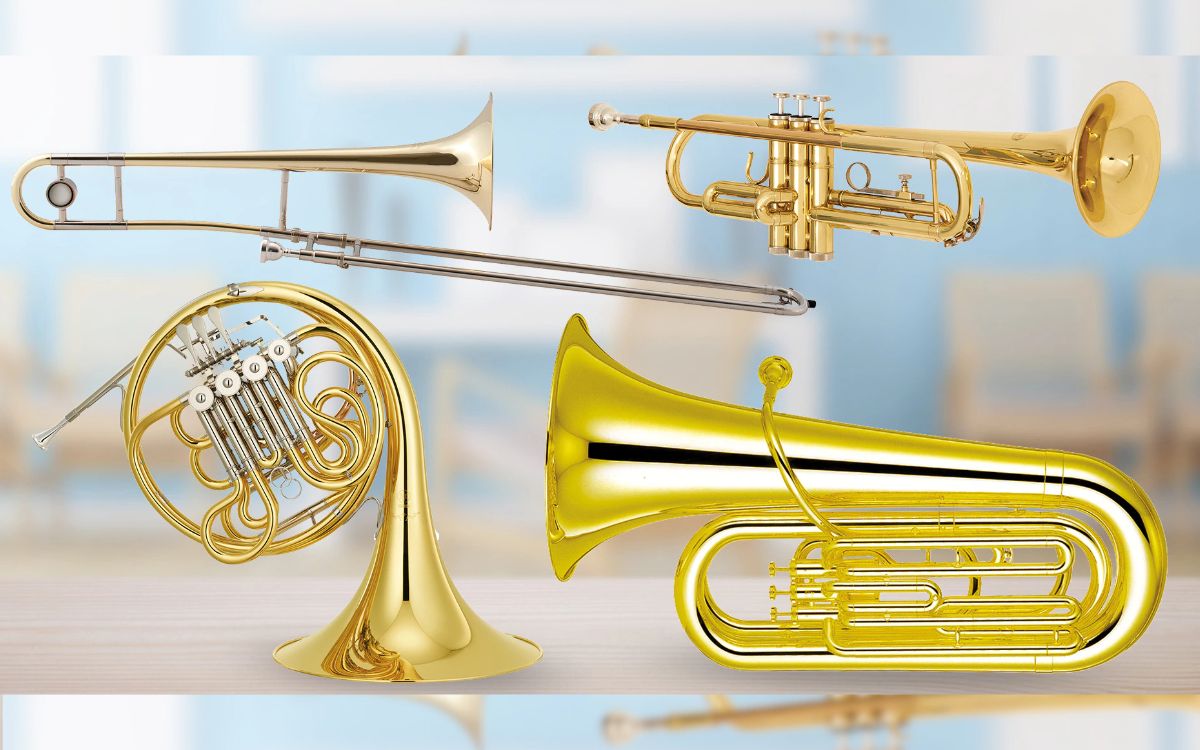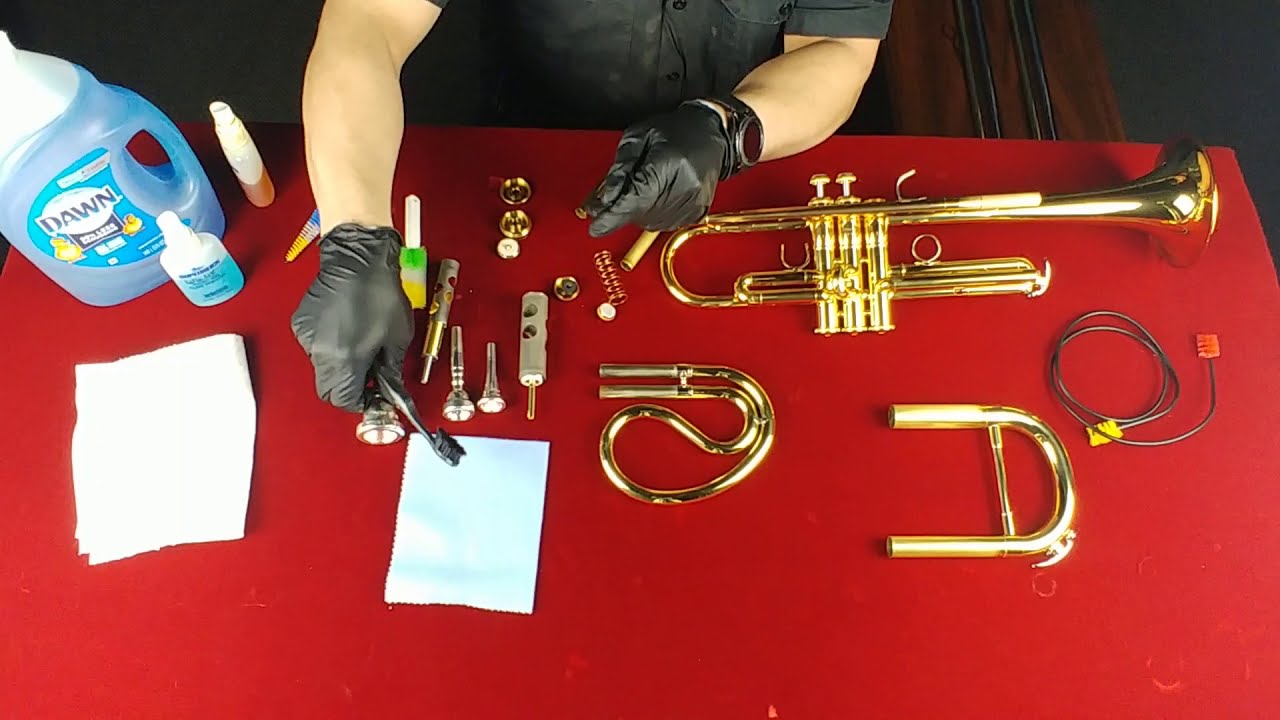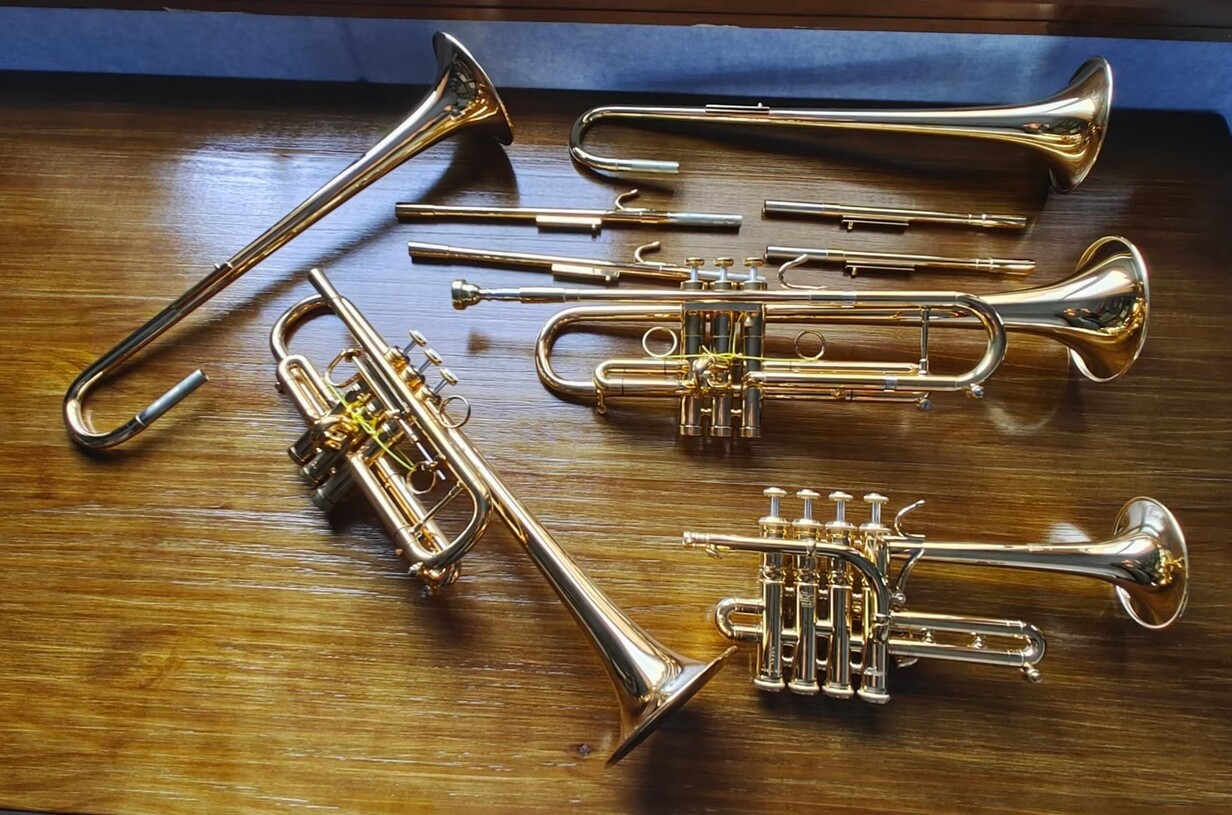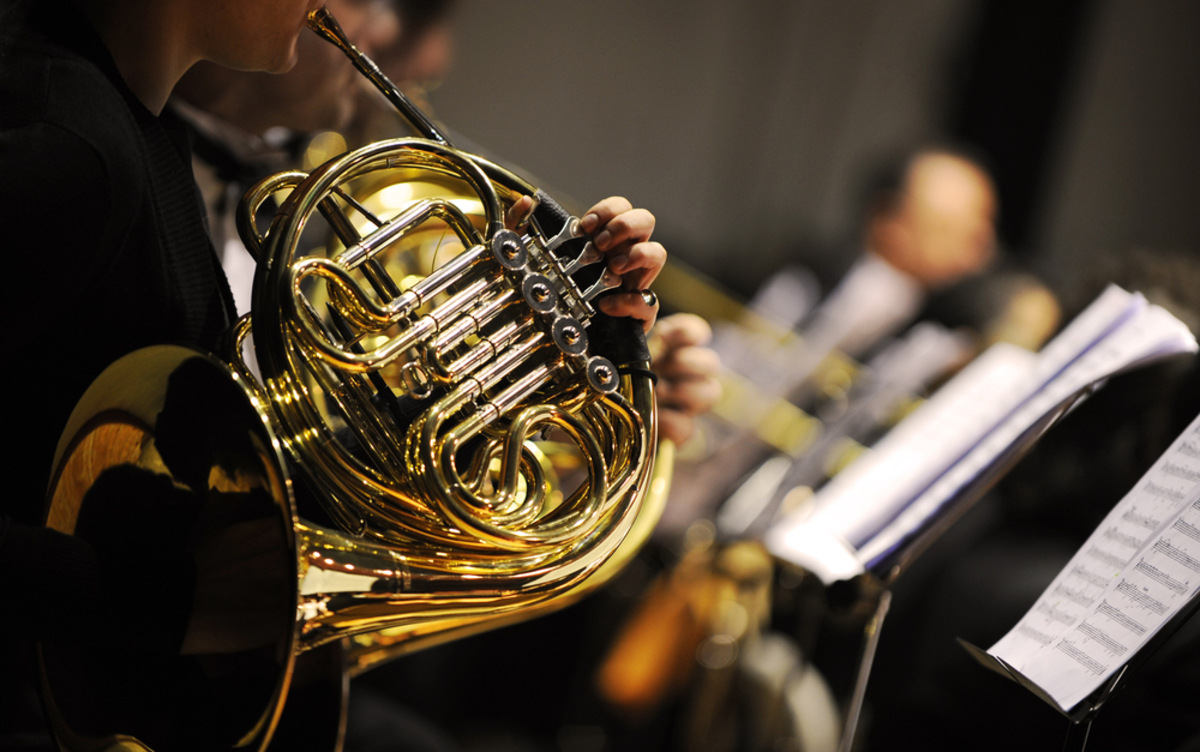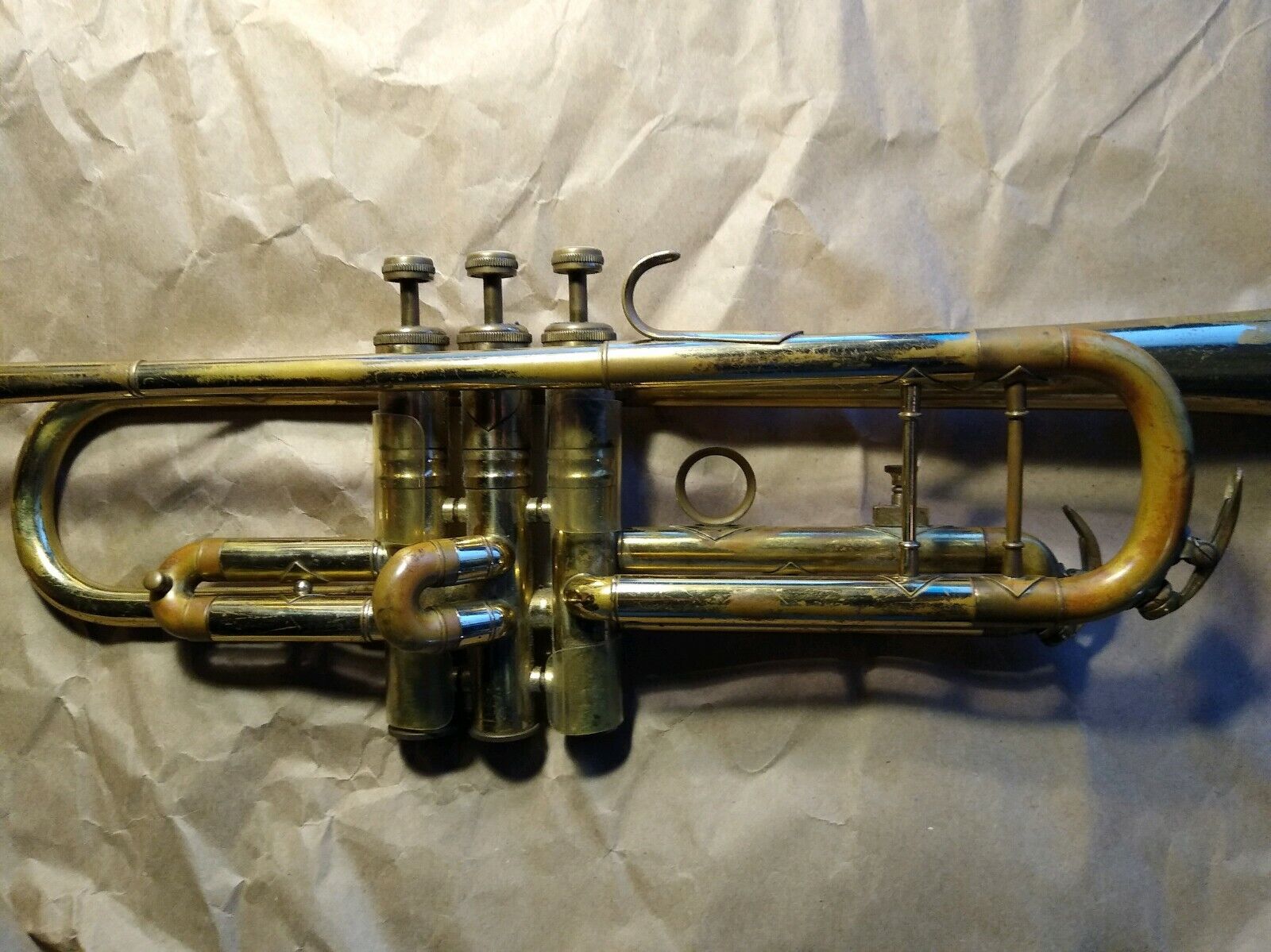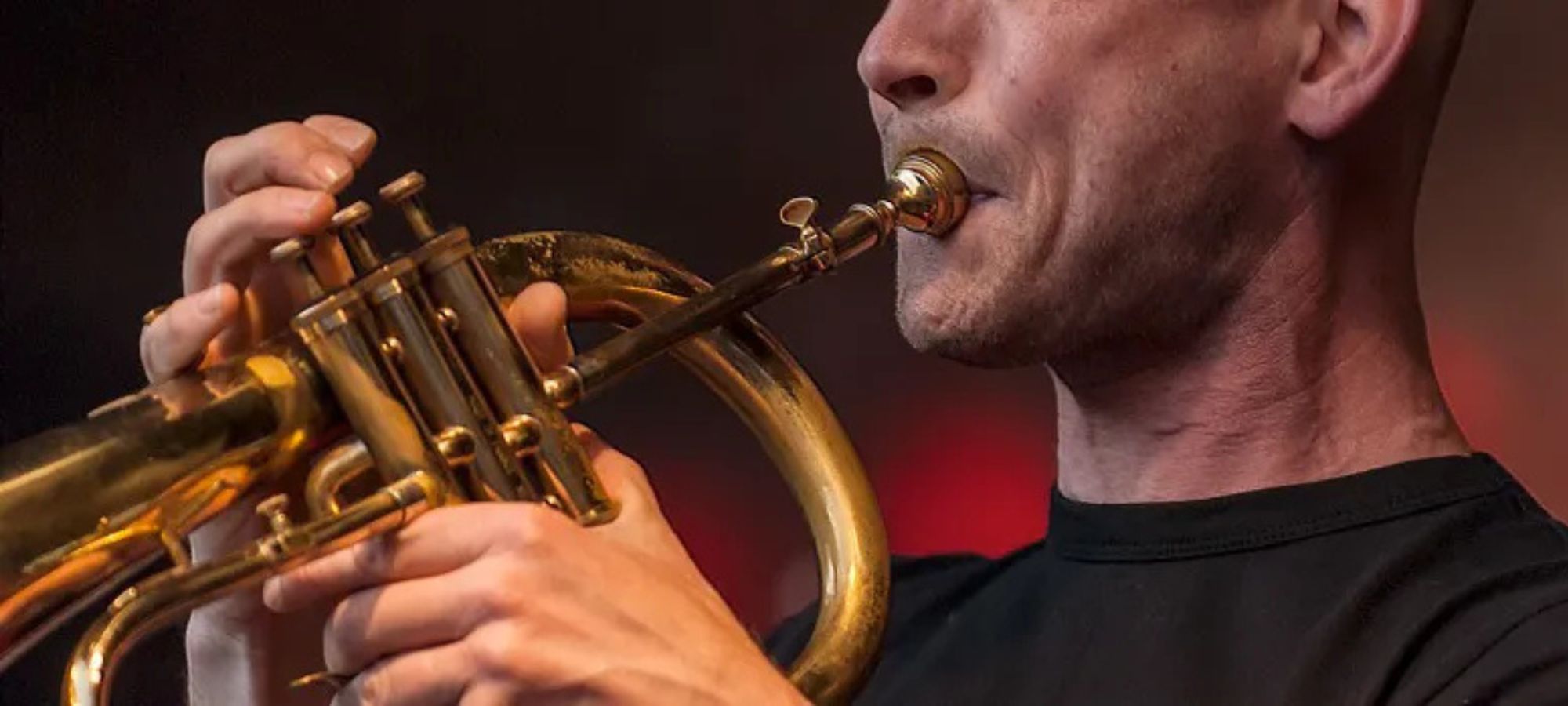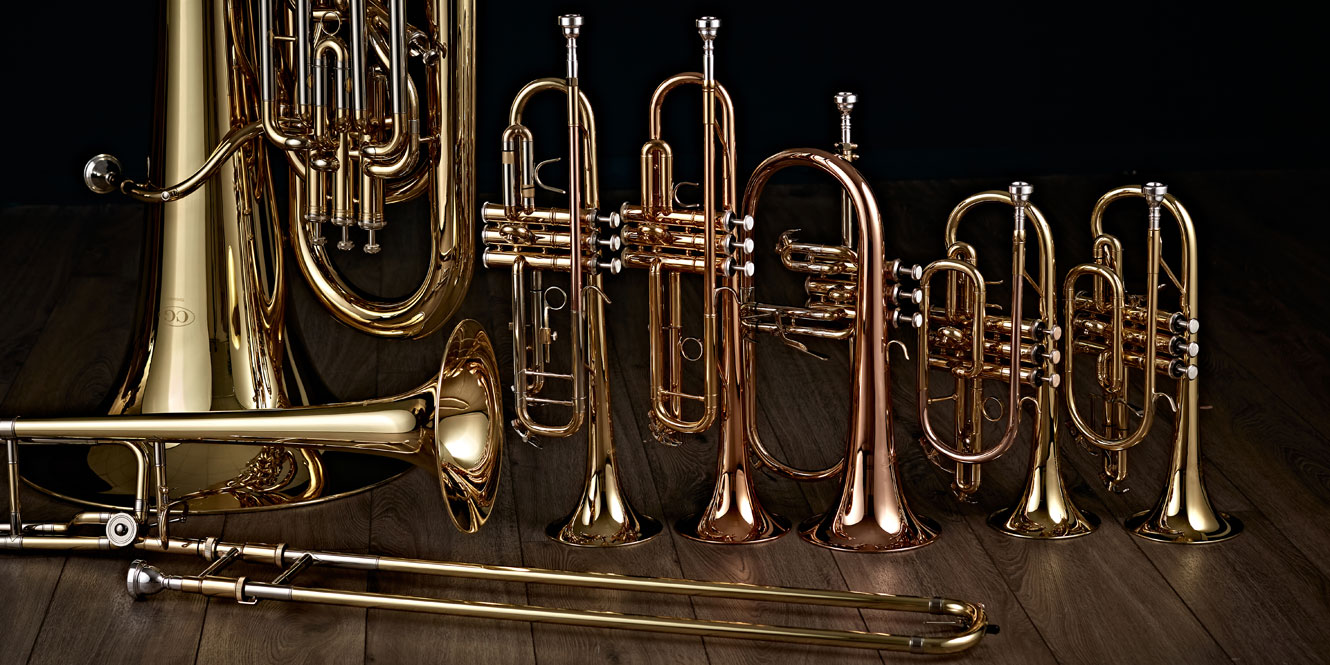Home>Instruments>Brass Instruments>Why Are Conn Brass Instruments So Hard To Delacquer
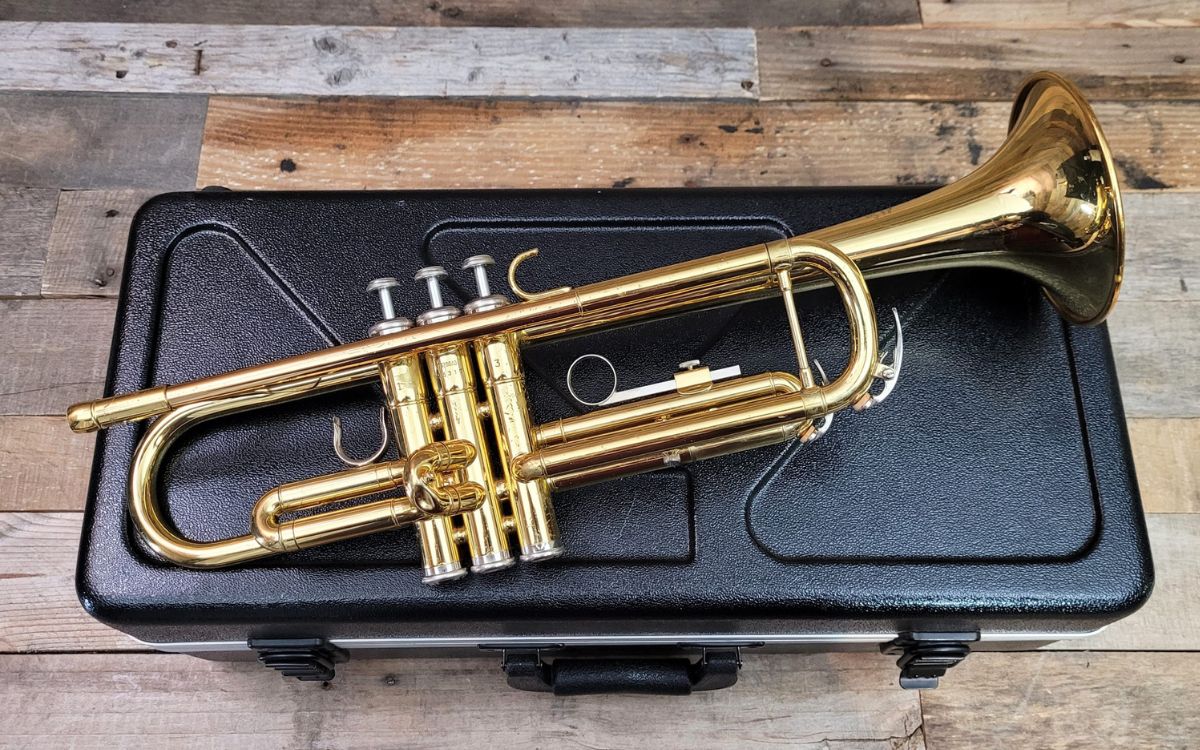

Brass Instruments
Why Are Conn Brass Instruments So Hard To Delacquer
Published: January 15, 2024
Discover why brass instruments, such as Conn, pose challenges when it comes to delacquering. Uncover the secrets behind the toughness of these instruments.
(Many of the links in this article redirect to a specific reviewed product. Your purchase of these products through affiliate links helps to generate commission for AudioLover.com, at no extra cost. Learn more)
Table of Contents
- Introduction
- What is Delacquering?
- The Popularity of Delacquered Brass Instruments
- The Challenges of Delacquering Conn Brass Instruments
- The Composition of Conn Brass Instruments
- Why Conn Brass Instruments are Hard to Delacquer
- The Impact of Delacquering on Sound and Performance
- Alternative Methods of Brass Instrument Cleaning
- Conclusion
Introduction
When it comes to brass instruments, the quality of the instrument plays a crucial role in the sound and performance. One prominent name in the world of brass instruments is Conn, known for their exceptional craftsmanship and top-notch sound quality.
However, one aspect that often baffles musicians and instrument enthusiasts is the difficulty in delacquering Conn brass instruments. Delacquering, the process of removing the lacquer coating from the surface of the instrument, has gained popularity in recent years due to the belief that it enhances the tonal characteristics and overall response of the instrument.
In this article, we will explore the reasons behind the challenges faced when delacquering Conn brass instruments. We will delve into the composition of Conn instruments, the impact of delacquering on sound and performance, and alternative methods of cleaning brass instruments.
So, if you’ve ever wondered why Conn brass instruments are notoriously hard to delacquer, read on to uncover the behind-the-scenes secrets of these exceptional musical instruments.
What is Delacquering?
Delacquering is the process of removing the lacquer coating that is applied to brass instruments during the manufacturing process. Lacquer is a protective layer that not only gives the instrument a shiny and polished appearance but also serves to protect the metal from tarnishing.
Over time, the lacquer coating on brass instruments can wear off or become damaged, resulting in an uneven or dull finish. This is where delacquering comes into play. By removing the lacquer, musicians and instrument enthusiasts believe that the true sonic characteristics of the instrument can be enhanced, resulting in a richer and more resonant sound.
Delacquering can be done through various methods, including chemical stripping, abrasive techniques, or a combination of both. Chemical stripping involves the use of solvents or solutions to break down the lacquer, while abrasive techniques use tools like sandpaper or abrasive pads to physically remove the coating. It is important to note that delacquering should be done carefully and by professionals to avoid damaging the instrument.
While delacquering has gained popularity among brass players, it is important to remember that not all brass instruments require or benefit from this process. Instruments with a naturally darker and more mellow sound, such as flugelhorns or euphoniums, may not see significant changes in sound quality after delacquering. However, instruments like trumpets and trombones, known for their brighter and more focused sound, may experience notable improvements in tonal characteristics.
Now that we have a clear understanding of what delacquering is and the purposes it serves, let’s dive into why delacquering Conn brass instruments poses unique challenges.
The Popularity of Delacquered Brass Instruments
Delacquering brass instruments has gained popularity among musicians and collectors for several reasons. One of the main reasons is the belief that removing the lacquer can enhance the instrument’s sound and response. Many brass players claim that delacquering allows the instrument to vibrate more freely, resulting in a richer and more resonant tone.
Delacquered brass instruments are also favored for their unique aesthetic appeal. The removal of the lacquer exposes the raw brass surface, giving the instrument a vintage and rustic look. This appeals to musicians who appreciate the beauty of natural materials and prefer a more personalized and distinctive instrument.
Additionally, delacquering can have an impact on the feel of the instrument. Some players find that a delacquered instrument offers a different tactile experience, with the raw brass potentially providing a more secure grip and improved playability.
Furthermore, delacquering is often seen as a way to rejuvenate an older instrument. Over time, the lacquer on brass instruments can become worn, chipped, or discolored. By removing the lacquer, the instrument can be given a fresh start, with the potential to uncover hidden beauty and restore its original luster.
It is important to note that the popularity of delacquered brass instruments is subjective and varies among different musicians and genres. Some players prefer the rich, warm sound produced by lacquered instruments, while others gravitate towards the raw and vibrant tones that delacquered brass can offer. Ultimately, the choice to delacquer an instrument is a personal one, driven by individual preferences and desired sound aesthetics.
With the increasing popularity of delacquering brass instruments, it’s no wonder that musicians have turned their attention towards the renowned Conn brand. However, the delacquering process for Conn brass instruments poses specific challenges that make them harder to delacquer compared to other brands. Let’s explore these challenges further in the next section.
The Challenges of Delacquering Conn Brass Instruments
Delacquering Conn brass instruments presents a set of unique challenges that make the process more difficult compared to other brands. These challenges can be attributed to the specific composition and construction of Conn instruments.
One of the main challenges is the thickness of the lacquer applied to Conn brass instruments. Conn is known for applying a thicker lacquer coating compared to other manufacturers. The thick lacquer layer not only ensures durability and protection but also makes the delacquering process more time-consuming and labor-intensive.
In addition to the thickness of the lacquer, Conn instruments are known for their intricate engravings and detailed craftsmanship. These engravings are often considered a hallmark of Conn instruments and are highly valued by musicians and collectors. However, removing the lacquer while preserving the delicate engravings requires great skill and care to avoid damaging or altering the instrument’s aesthetic appeal.
Conn brass instruments also have unique construction features that add to the difficulty of delacquering. The presence of multiple tubing sections, valves, and intricate valve casings make it challenging to reach all the nooks and crannies of the instrument during the delacquering process. This requires extra attention and precision to ensure that the lacquer is fully removed from all parts of the instrument.
Furthermore, Conn instruments are often made from high-quality materials, such as brass alloys with a higher copper content. These alloys can be more resistant to the delacquering process due to their composition. The increased copper content can lead to a stronger bond between the lacquer and the brass surface, further adding to the complexity of removing the lacquer coating.
Due to these challenges, delacquering Conn brass instruments requires specialized expertise and meticulous attention to detail. It is crucial to entrust the delacquering process to experienced technicians who understand the nuances of Conn instruments and can handle the unique challenges they present.
Now that we have explored the challenges faced when delacquering Conn instruments, let’s delve into the composition of Conn brass instruments to gain a better understanding of why they are specifically harder to delacquer.
The Composition of Conn Brass Instruments
The composition of Conn brass instruments plays a significant role in their unique sound and performance. Conn instruments are primarily made from high-quality brass alloys, typically consisting of a combination of copper and zinc.
The specific composition of the brass alloys used in Conn instruments can vary depending on the model and series. However, Conn is renowned for using brass alloys with a higher copper content compared to other manufacturers. The increased copper content contributes to a warmer and more resonant sound quality, which is characteristic of Conn instruments.
In addition to the copper-zinc alloy, Conn brass instruments may also incorporate other materials such as nickel silver, stainless steel, or gold plating for certain parts like valves, slides, or trimmings. These materials are chosen for their durability, corrosion resistance, and aesthetic appeal.
Conn instruments are meticulously crafted to create a harmonious balance between the materials used and the instrument’s design. The thickness and weight distribution of the instrument are carefully calibrated to optimize the instrument’s resonance and playability.
Furthermore, Conn instruments are often adorned with intricate engravings, adding to their visual appeal. These engravings are typically etched or carved onto the surface of the instrument, showcasing the attention to detail and craftsmanship that Conn is known for.
The combination of high-quality brass alloys, precise construction, and intricate engravings make Conn brass instruments highly sought after by musicians and collectors alike. However, these factors also contribute to the challenges faced when delacquering Conn instruments.
Now that we understand the composition of Conn brass instruments, let’s explore why these instruments are particularly difficult to delacquer.
Why Conn Brass Instruments are Hard to Delacquer
Delacquering Conn brass instruments poses a unique set of challenges that make the process more difficult compared to other brands. These challenges can be attributed to the specific composition, construction, and craftsmanship of Conn instruments.
One of the main reasons why Conn instruments are hard to delacquer is the thickness of the lacquer coating. Conn is known for applying a thicker layer of lacquer to their instruments compared to other manufacturers. This thick lacquer not only provides added protection but also makes it more challenging to remove during the delacquering process.
In addition to the thickness of the lacquer, Conn instruments feature intricate engravings that are deeply etched into the surface of the instrument. These engravings are a defining characteristic of Conn instruments and are highly prized by musicians and collectors. However, removing the lacquer while preserving the intricate engravings requires great skill and precision to avoid damaging or altering the aesthetics of the instrument.
The construction of Conn brass instruments also adds to the difficulty of delacquering. Conn instruments often have multiple tubing sections, valves, and intricate valve casings. These complex designs make it challenging to access all the nooks and crannies of the instrument during the delacquering process, requiring extra care and attention to ensure thorough removal of the lacquer.
Furthermore, Conn instruments are made from high-quality brass alloys with a higher copper content. This composition contributes to the unique sound and resonance of the instrument but also makes them more resistant to the delacquering process. The increased copper content forms a stronger bond between the lacquer and the brass surface, making it more challenging to strip away the coating.
Given these challenges, delacquering Conn brass instruments requires specialized knowledge and expertise. It is important to entrust the delacquering process to skilled technicians who understand the intricacies of Conn instruments and can navigate the complexities involved in removing the lacquer without compromising the instrument’s integrity.
While delacquering Conn brass instruments may be more challenging, the results can be rewarding. The removal of the lacquer can reveal the natural beauty of the brass surface, potentially enhancing the instrument’s sound and giving it a unique and personalized appearance.
Now that we understand why Conn brass instruments are hard to delacquer, let’s explore the impact of delacquering on the sound and performance of these instruments.
The Impact of Delacquering on Sound and Performance
Delacquering Conn brass instruments can have a significant impact on their sound and performance. While opinions on the effect of delacquering may vary among musicians, there are some common observations regarding the changes that occur after removing the lacquer.
One noticeable impact of delacquering is the alteration of the instrument’s tonal characteristics. Many musicians claim that delacquering enhances the instrument’s resonance and allows it to vibrate more freely. The removal of the lacquer is believed to reduce the dampening effect on the brass surface, resulting in a richer and more vibrant sound.
Delacquering can also affect the instrument’s projection and response. Some musicians find that delacquered instruments produce a greater projection and clarity, allowing the sound to carry further and resonate more effectively in various performance settings.
In terms of playability, delacquering can have an impact on how the instrument feels in the hands of the player. The absence of the lacquer coating may provide a different tactile experience, potentially allowing for a more secure grip and improved control over the instrument.
It’s important to note that the impact of delacquering on sound and performance may vary depending on the individual instrument and the preferences of the player. Every brass instrument is unique, and factors such as the player’s technique, mouthpiece selection, and personal preferences can also play a significant role in determining the overall outcome.
Regardless of the specific changes brought about by delacquering, it is crucial to approach the process with care and consideration. Delacquering should be undertaken by skilled professionals who understand the intricacies of each instrument and can tailor the process to suit the specific needs and characteristics of the instrument.
While delacquering can offer potential benefits to the sound and performance of a Conn brass instrument, it is important to weigh the potential advantages against the risks and potential drawbacks. It is also worth noting that the decision to delacquer should be based on individual preferences and considerations, as not all musicians may desire or benefit from the delacquered sound.
Now, let’s explore alternative methods of cleaning brass instruments for those who do not wish to undertake the delacquering process.
Alternative Methods of Brass Instrument Cleaning
For those who prefer to avoid delacquering their Conn brass instruments, there are alternative methods of cleaning and maintaining the instruments to keep them in optimal condition. These cleaning methods can help remove dirt, grime, and tarnish without compromising the integrity of the lacquer.
One common and effective method is regular maintenance and cleaning using brass instrument cleaning kits. These kits typically include specialized brushes, cleaning solutions, and polishing cloths designed specifically for brass instruments. Regular cleaning using these kits can help keep the instrument clean and free from buildup, ensuring optimal performance and extending the life of the lacquer.
Avoiding excessive moisture is also crucial in preserving the condition of the lacquer. After each playing session, it is important to thoroughly dry the instrument, especially the valves and slides, to prevent the accumulation of moisture that can lead to corrosion and damage to the lacquer. Using a valve oil to lubricate the valves and slide grease for the slides can also help maintain smooth operation and protect against corrosion.
In cases where the instrument has stubborn tarnish or discoloration, a professional cleaning from a reputable instrument repair technician can be beneficial. These technicians have the expertise and specialized tools to safely and effectively remove tarnish without damaging the lacquer or the instrument’s finish.
It is important to note that regular cleaning and maintenance are key to preserving the lacquer and overall condition of the instrument. This includes wiping down the instrument after each use, storing it in a proper case to protect against dust and moisture, and scheduling periodic check-ups with an instrument repair technician to catch any potential issues early on.
By maintaining a consistent cleaning routine and utilizing specialized cleaning products, Conn brass instrument owners can keep their instruments looking and performing their best without the need for delacquering.
Now, let’s conclude our exploration of delacquering Conn brass instruments and the various cleaning methods available.
Conclusion
Delacquering Conn brass instruments presents unique challenges due to the thickness of the lacquer, intricate engravings, complex construction, and high-quality brass alloys used. However, for those who prefer to maintain the lacquer coating, alternative methods of cleaning and maintenance can ensure the instruments stay in optimal condition.
Delacquering has gained popularity among musicians who believe that removing the lacquer can enhance the instrument’s sound and response. The impact of delacquering can vary, influencing tonal characteristics, projection, and playability. However, the decision to delacquer should be carefully considered, as it is subjective and may not be suitable for all instruments or personal preferences.
To maintain lacquered Conn brass instruments, regular cleaning using specialized kits, proper drying after use, and professional cleanings when necessary are essential. These methods can help preserve the instrument’s appearance and performance without compromising the integrity of the lacquer.
Ultimately, the choice between delacquering and maintaining the lacquer comes down to personal preference and desired sound aesthetics. Whether one chooses to delacquer or preserve the lacquer coating, both approaches can result in a well-maintained and beautiful Conn brass instrument.
So whether you prefer the vintage appeal and enhanced tonal characteristics of a delacquered instrument or the pristine look and protection of a lacquered instrument, Conn brass instruments continue to captivate musicians and enthusiasts with their exceptional craftsmanship and unique sound.




